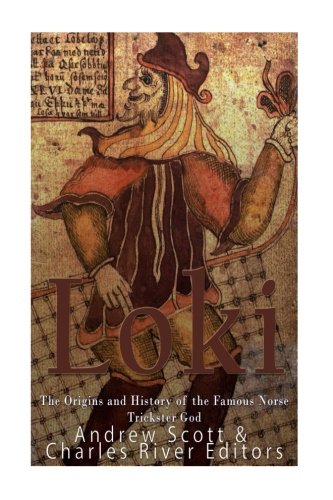
Loki: The Origins and History of the Famous Norse Trickster God
*Includes pictures
*Includes medieval accounts of Loki
*Includes online resources and a bibliography for further reading
Much of what is known of the Norse myths comes from the 10th century onwards. Until this time and, indeed, for centuries afterwards, Norse culture (particularly that of Iceland, where the myths were eventually transcribed) was an oral culture. In fact, in all Scandinavian countries well into the thirteenth century laws were memorized by officials known as “Lawspeakers” who recited them at the “Thing.” The Thing was the legislative assembly in Scandinavia “held for judicial purposes.”
One of the most famous of these Lawspeakers was the Icelander Snorri Sturluson, a masterful writer who wrote the Prose Edda in the thirteenth century. There are other sources for the Norse myths, namely the later “Poetic Edda,” a collection of poems and prose work, and other sagas but the Snorri’s Prose Edda is the most complete work whose attribution is known to modern scholars.
It is believed that Snorri, a Christian, recorded these pagan beliefs so as to preserve and explain the stylistic poetry of Iceland, particularly the popular descriptive devices known as kennings. A kenning is made up of a base word and a modifying word that is used to describe a separate object. For example, “Gold” had a great many kennings, one of which was “Sif’s Hair.” If, however, the memory of Loki cutting off Sif’s hair and replacing it with gold were lost, then this kenning would make no sense to later readers. There are many of these allusions to the myths and it is thanks to them that the myths have survived.
The Norse Myths also appear to follow a chronological narrative, which the historian John Lindow describes as having a “Mythical Past, Present and Future.” Loki features in each of these literary “epochs” and it helps to understand the complexity of his character, as well as the belief system, to view the myths in this way.
While not as well-known as Thor or Odin, Loki’s name is immediately recognizable to many, and his history is as enigmatic as his characters. Fittingly, as historian Rudolph Simek put it, his “sources are just as varied as his interpretations.” He first appears in Þjóðólfr ór Hvíni´s 9th century poem Haustlöng, recorded in the Skáldskaparmál, but the etymology of his name has still not been solved. Rudolph Simek has made a tentative assertion that Loki was related to the Old Norse “luka” (meaning to “close”) and has surmised that there could be a connection between this and his role in the “closing” of the world during the apocalyptic event Ragnarök.
Whatever the original meaning of his name, the surviving image of Loki is multifaceted but mostly negative. “Father of the Gods” enemies’ Loki has been interpreted as a fool, a trickster and a devil, the latter being connected with his being a harbinger for the Norse “end of days” and the subsequent revival of peace and godliness that had clear echoes in the Christian Apocalypse.
There is no evidence of cult activity for Loki, and despite many attempts at defining one, there appears to be no obvious religious “function” to his character. Nevertheless, he permeates many of the key moments in Norse mythology - for good and bad - beginning and ending with his role as “father of monsters.” Loki: The Origins and History of the Famous Norse Trickster God looks at the story and the legendary Norse deity. Along with pictures depicting important people, places, and events, you will learn about Loki like never before.
6 x 0.11 x 9 inches
48 Pages



